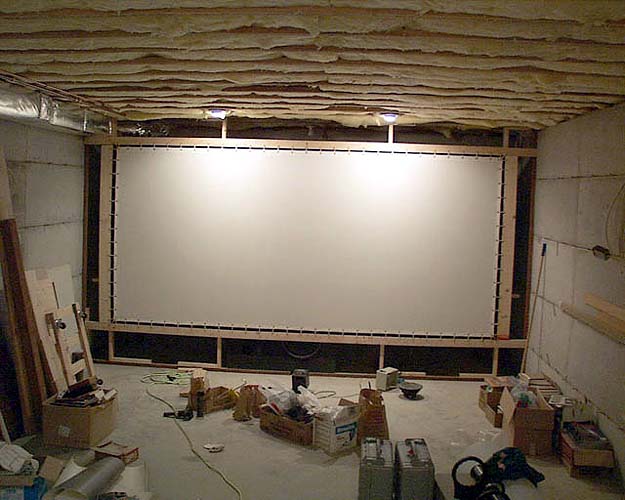
The "auditorium" is cleaner and the screen has been mounted. Just under the screen the subwoofer peeks out. The screen is 14 ft wide and 6 1/2 ft tall. At this point another problem is made apparent. What to do with the ceiling? Complicating things is the heat duct and water pipes running down the left side of the room.
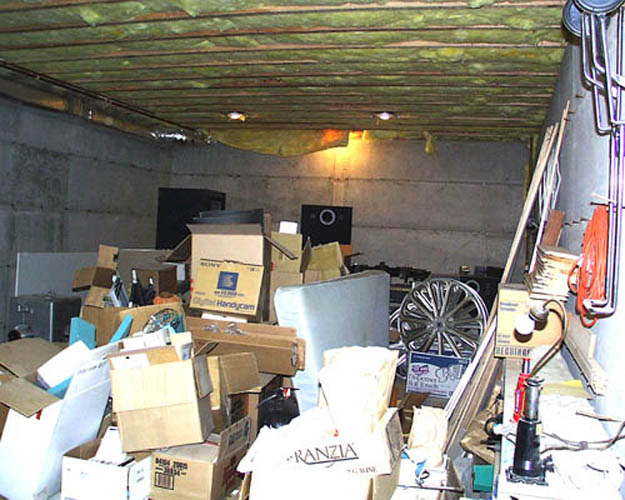
In the beginning there was junk, and the theater was full of it.... The end of the room we're looking at is were the screen will go. You can see one of the three speakers that will fit behind the screen, and to the left of it is the sound rack. On the far left, the projector peeks out from under a pile of stuff. The house was designed to accomodate the theater, but for the first couple years of it's life the theater served as a catch-all from "moving day".
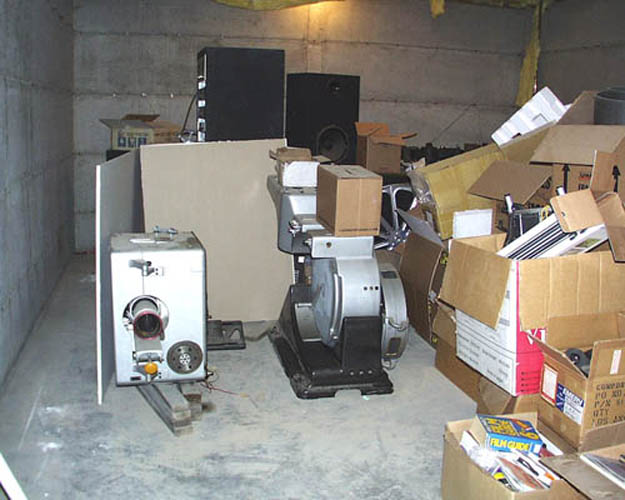
How humiliating for the noble Norelco! As pictured it is broken down into two basic components, the projection head (left) and the base (right). Behind it the sound rack and a speaker. Note the series two B&L anamorphic, which was used successfully at the last theater. The only bad part of owning a Norelco AA 35/70 is moving it! I have to resort to an engine hoist and piano dolly (the Egyptian method).
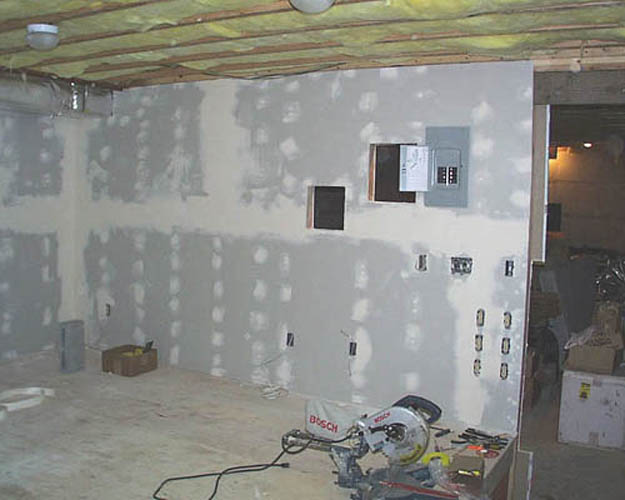
Construction started in the booth, so I would have a place to put things! The floor was raised about 2 feet. If you look under the saw you can see the floor joists. I had the basement built with 10 foot ceilings so I could raise the floor and still have adequate head room. In the center of the wall is the projection port and the projectionist's view port. Later the projection port had to be widened because of vignetting. The 6 plug ins are for the sound rack.
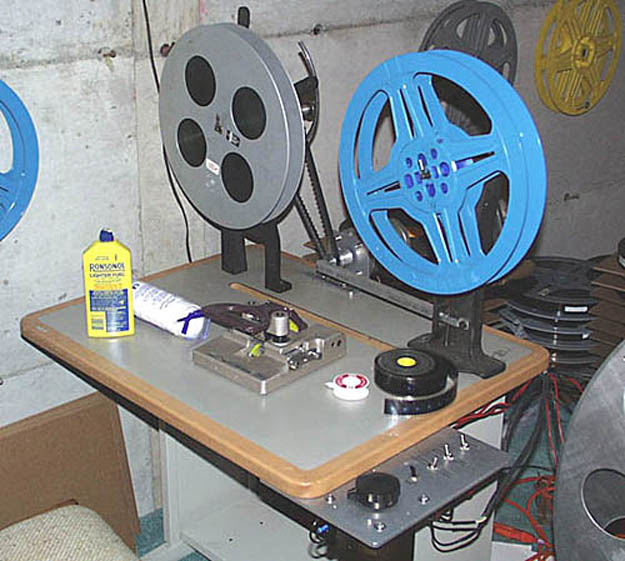
Homemade make-up table, used for assembling the film onto the large reels for storage and showing. In it's past life this was a computer printer table (rescued from Boeing surplus). On the left is the take up arm from a vintage Simplex projector, driven by a small DC motor. On the right is a rewind with brake. The splicer is between and to the front. Fastened on the right side of the table is the control panel. This allows the operator to run either the tower or the table and by switching polarity to run the reels forward or backward.
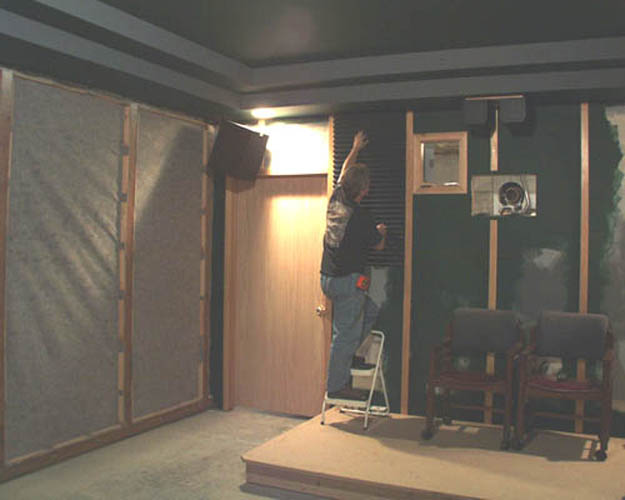
The ceiling is finished now, painted a dark, dark green and dark gray for accent. The walls have 2x4s glued and screwed to them and carpet pad/felt stapled to them for the first layer of sound absorption. At this point I'm not sure what the finishing will be on the walls, but am leaning toward drapes. The surrounds are up, and there's a little platform for the seats to sit on, so you're up off the floor. I'm holding up a piece of acoustic foam to check the fit between two trim pieces. The projectionist's port has been finish lined. Carpet will be laid when the carpet guys get to my turn on the list. I'm still trying to come up with an appropriate (art deco) ceiling sculpture/decoration/light.
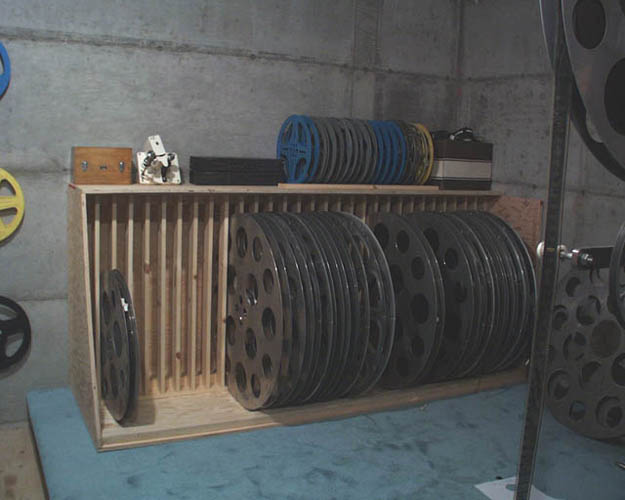
Combination reel holder and bicyble rack, just in case someone on a bicycle wants to watch a movie. The reels will generally stand by themselves unless they start to tip or roll. This storage unit stops the "domino effect" as well as "runaway reel syndrome".
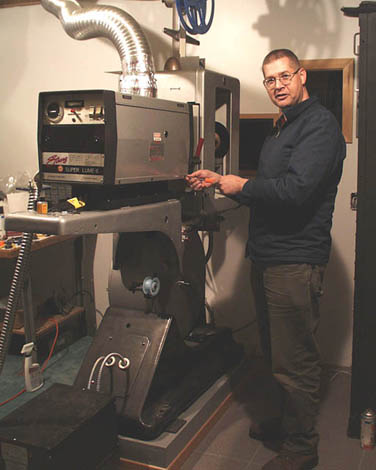
Ken Layton puts the finishing touches on the new lamphouse. The Norelco now sports an original uncut lamphouse bracket with a Strong Super Lume-X atop. For my small screening room, I'm only running a 1KW bulb, but it certainly looks nice on the screen.
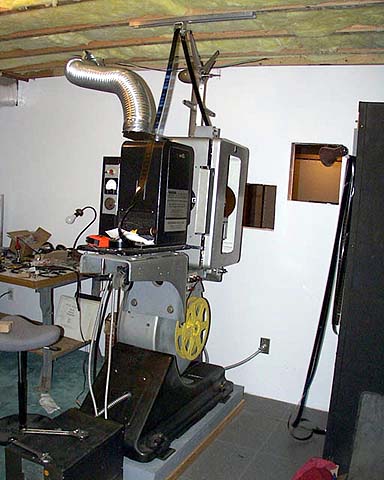
Once construction was done in the booth (at least to a certain point), I began to fill it up. Shown here is the Norelco assembled with a test loop in it. On the right the sound rack has been installed. There is carpet and linoleum on the floor. A 1000 watt Cinemeccanica (vertical) lamp house rides on the back of the Norelco.
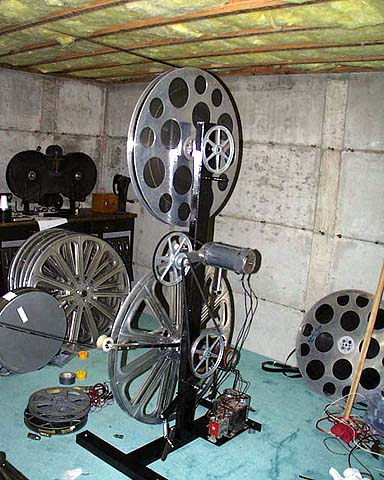
My homemade film transport. The fusion of two designs, the Cinemeccanica tower (for it's compact size), and the double Mutt (for it's electronic control abilities). The film is loaded on a reel at the top and pays out to the left. It goes through the projector and is taken up on the lower reel. A white roller can be seen riding on the film as it goes to the take up reel. This arm controls the speed at which the take up reel turns, using a variac. The film can be rewound by changing one belt and throwing one lever.
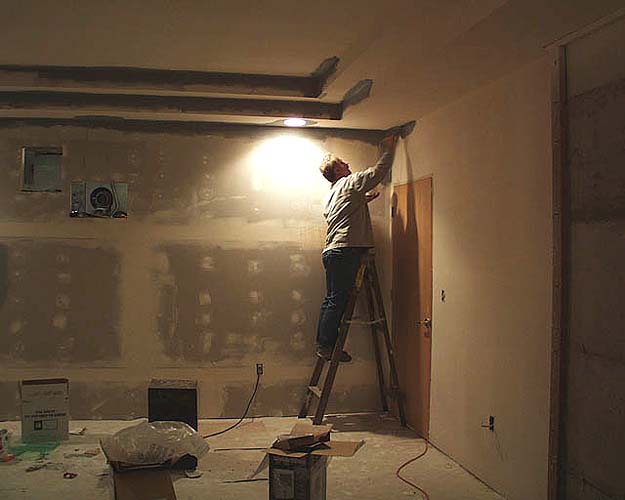
A solution to the ceiling problem. Here, I'm giving the ceiling a coat of primer/sealer. Right above my paintbrush is the heating duct, now concealed within the sheet rock. Above my head are the water pipes. The stepped "art deco" design is carried to all four sides of the ceiling for symmetry. In the center of the wall the Norelco peeks through. The projection port has been widened to avoid vignetting.
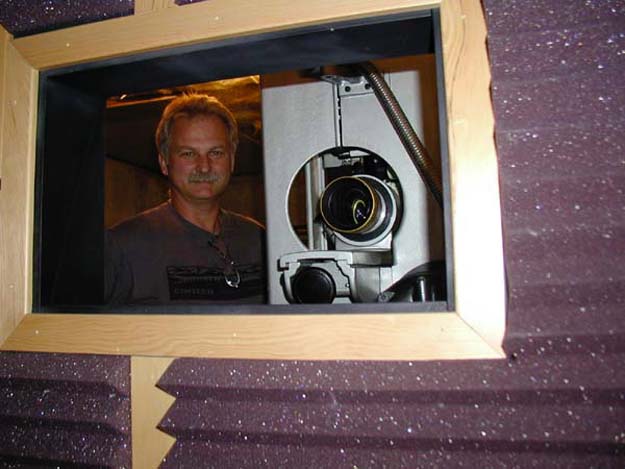
Greg with his Norelco AAII.
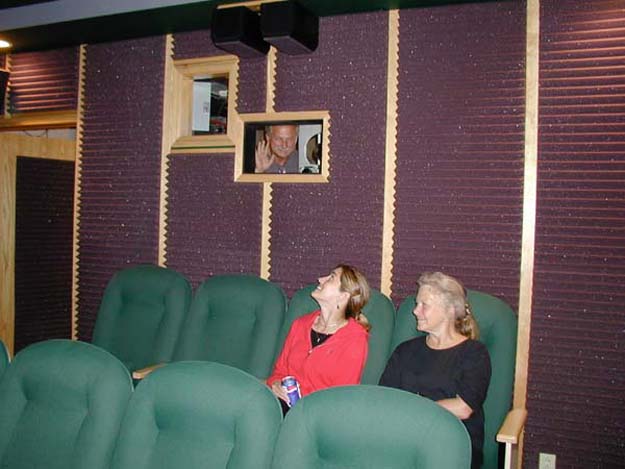
At the gala grand opening two of the local lovelies are waiting to be entertained.
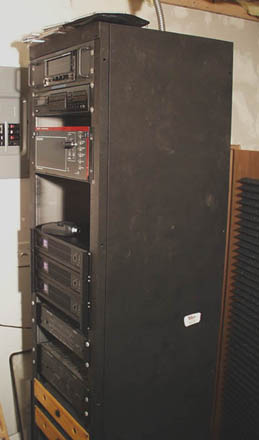
The sound rack as follows: Audio Control RTA, Teac rackmount CD player, Dolby CP65, space for expansion, QSC DCA1622, SAE A202 for surrounds, SAE A502 bridged for subwoofer, 2 Kintek power amps in reserve, all wrapped up in my FAA surplus, Krylon painted sound rack
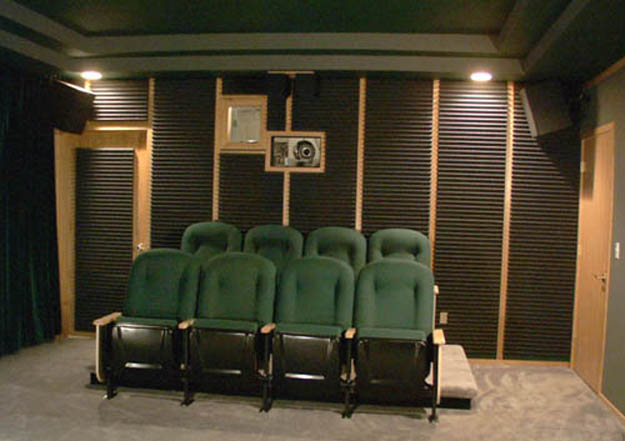
The auditorium finally comes together. Two rows of Irwin theater seats, give film fans a comfy place to sit. The back row is 8" higher than the front row. Around the platform I have used a ropelight so guests won't trip, coming or going. The door on the right is the entrance and the door on the left leads to the projection booth. On the back wall is acoustic foam to deaden the echo. The surrounds are visable in the upper corners.
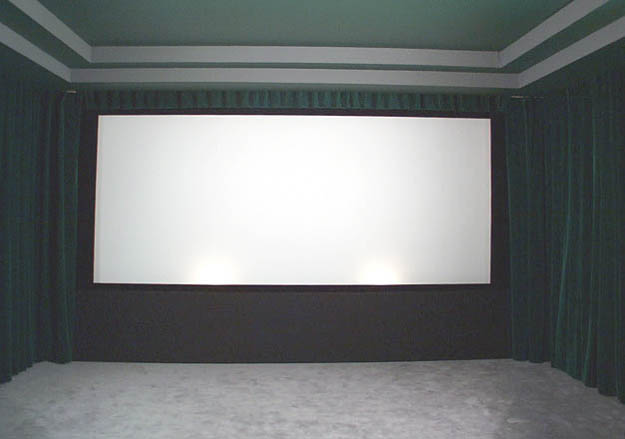
It's what's up front that counts. After trying for some months to get my digital camera to work in a low light situation, I finally got this photo. Barely visable are the screen lights at the bottom of the screen. The screen area is approximately 13 x 5.5 feet. The curtains are a heavy velour material that looks theaterish and also helps immensely to deaden the bad acoustics of the concrete walls.
| 
 Home
Home
 Products
Products
 Store
Store
 Forum
Forum
 Warehouse
Warehouse
 Client Login
Client Login
 Contact Us
Contact Us
















